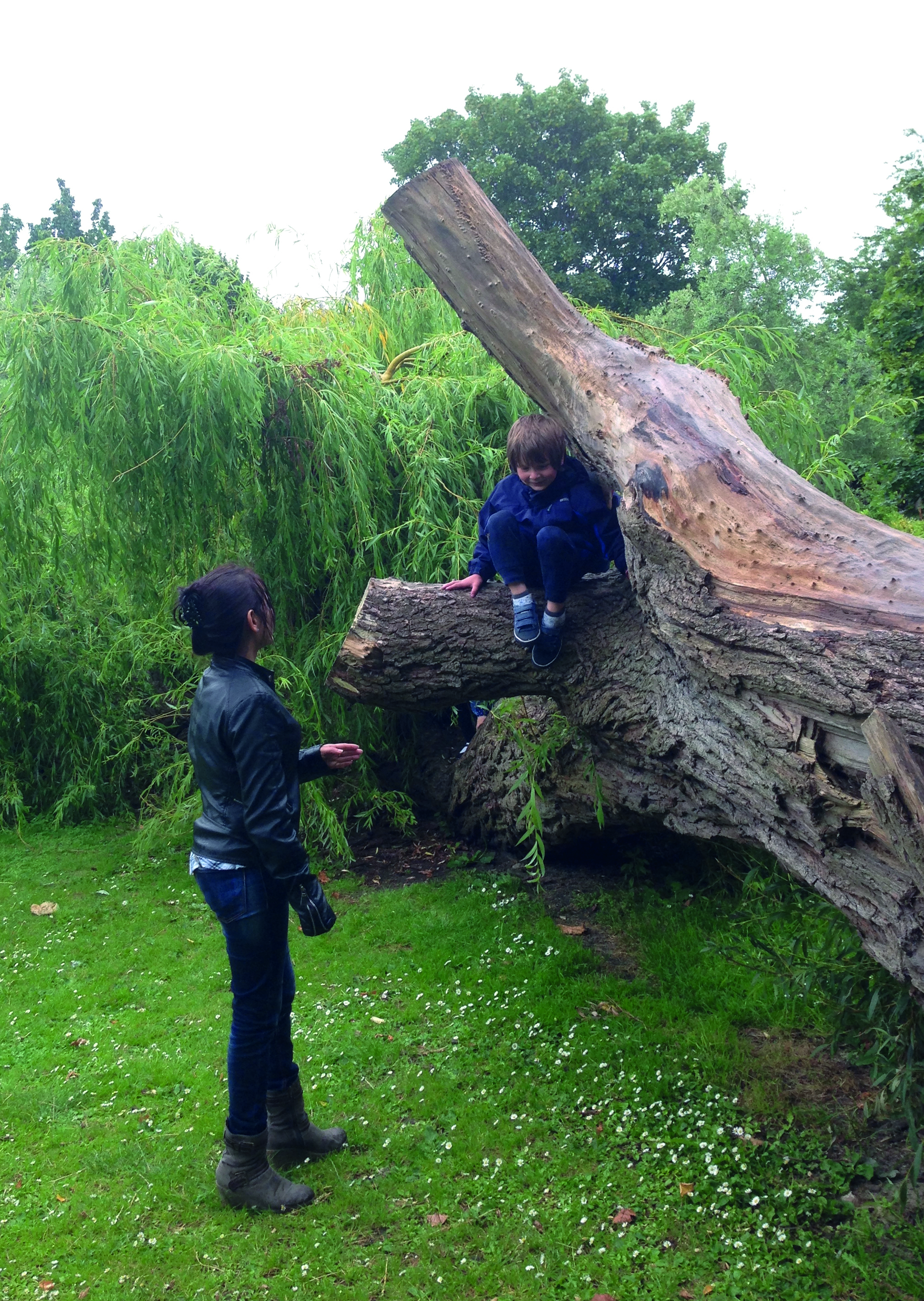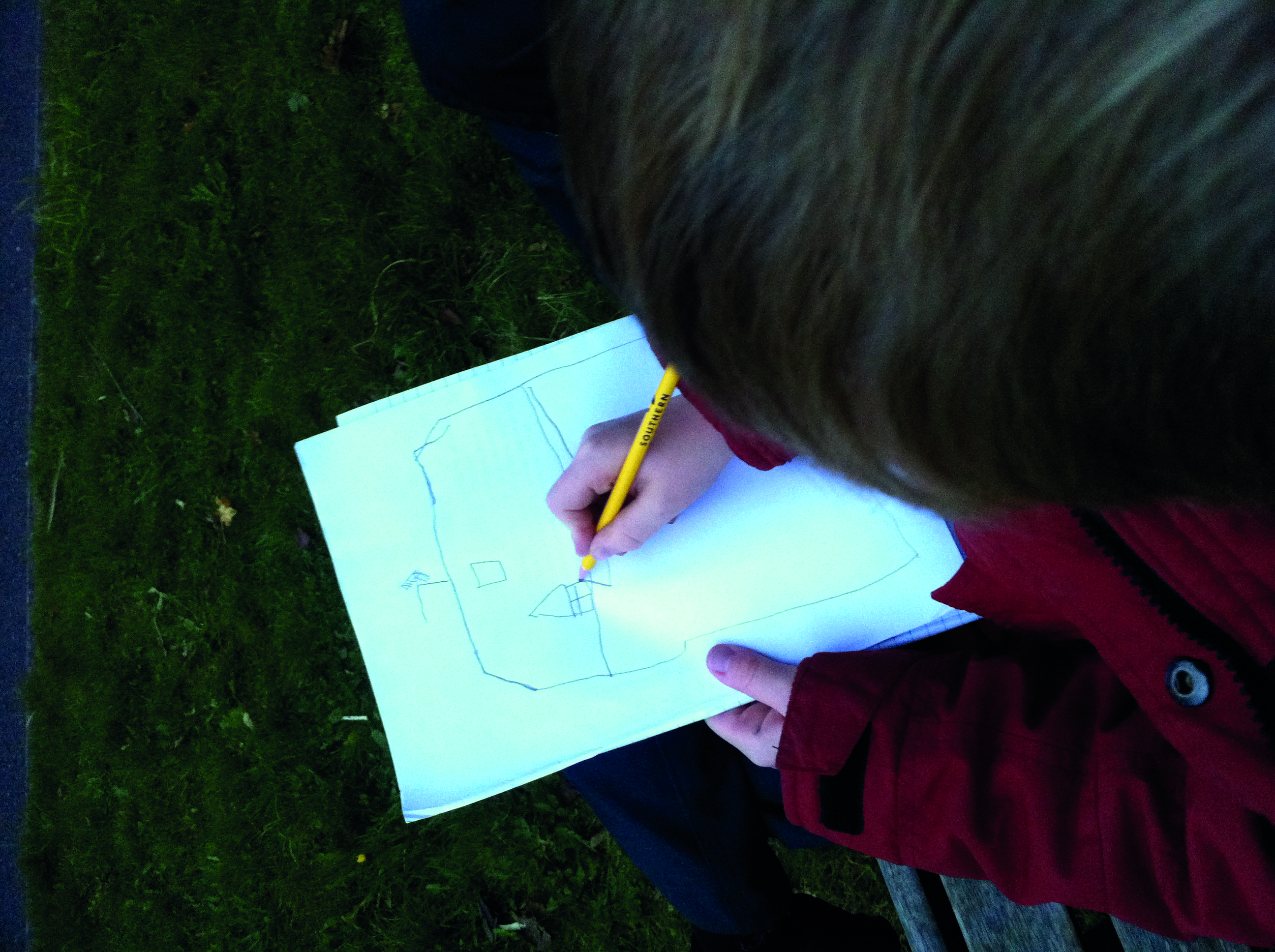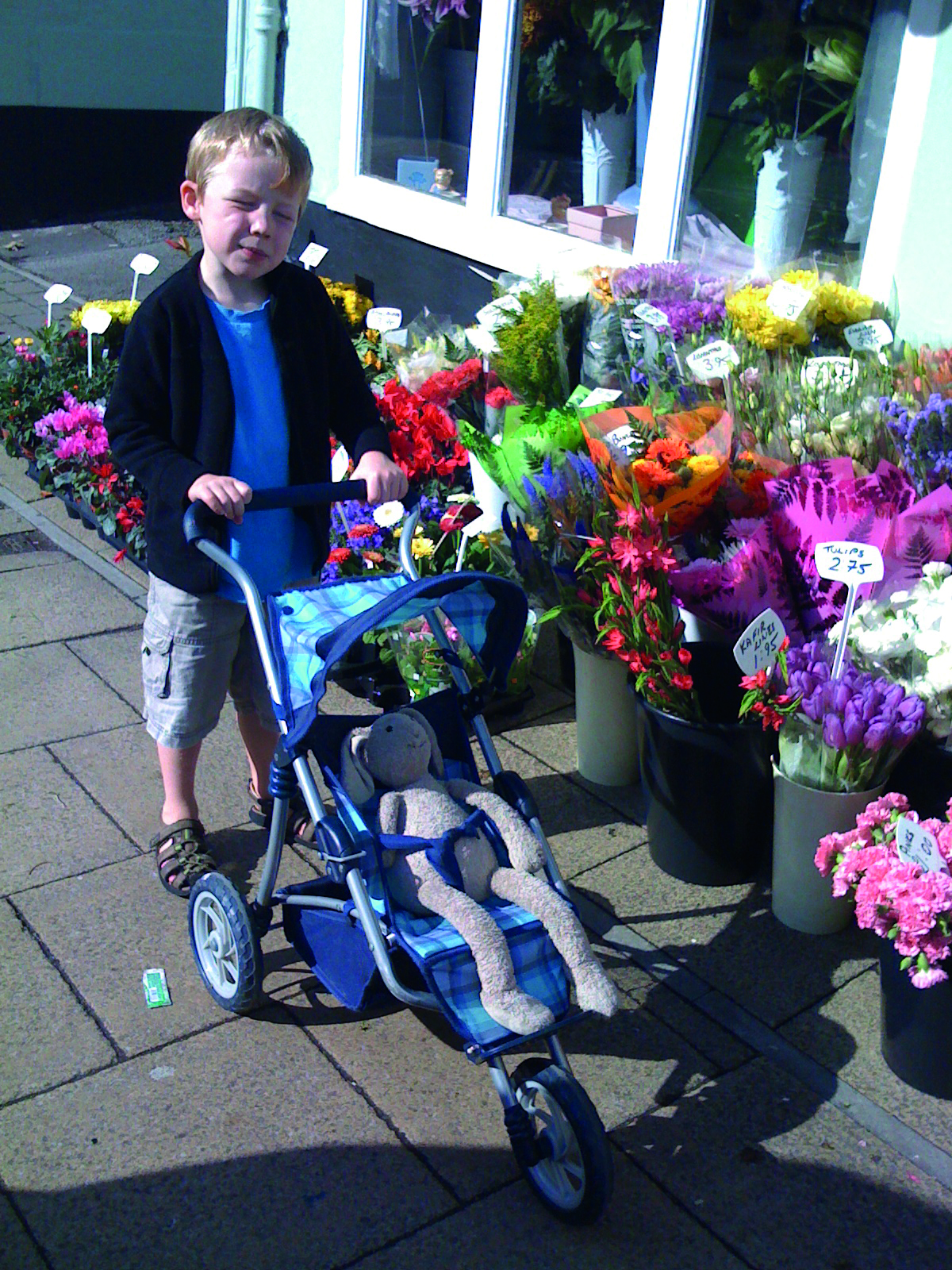
Whether yours is a packaway or a permanently located setting, getting out and about beyond your own garden is really valuable. It’s worth it for the new sights, sounds and opportunities to connect with everyday life in your locality.

1. BE TOURISTS
Start by taking a tour of the streets closest to your setting, imagining you are tourists from a different part of the world. Encourage children to describe what they see, seeking words that will describe the features and spaces they spot and speculating about the activities that might happen in each location.
Choose a couple of places to stop and admire the view and take photographs. Back in the setting, print the photos out postcard sized for each child to ‘mark’ with their story. Why not post them home, or to children’s families further afield?
2. BE ATHLETES
Street furniture makes an excellent workout circuit. Carry out a dry run yourself to benefit-risk assess the route and obstacles, then take children out to get physically active over benches, walls and fences, under barriers and bike racks, around poles and lampposts, and in and out of bollards.
Children will need to know how to land correctly when jumping – something they can practise in the setting’s garden – and manage their moving bodies in order to balance.
3. BE MATHEMATICIANS
Maths is truly all around us, but after a while, the maths displays in and out of the building start to lose their impact. Reinvigorate children’s interest in counting and number (and shape, space and measure!) by exploring maths in the neighbourhood.
Give each child a number and ask them to spot as many as they can (and perhaps write each one on a clipboard); look for groups of numbers (such as phone numbers or house numbers); walk up a street where the houses have odd and even numbers on opposite sides of the road, counting each house in twos.

4. BE ARTISTS
There’s more to fine art than just painting. Choose a place in the neighbourhood where the whole group can sit together, and record the sights and sounds through the artistic genre of your choice.
There is no reason why dough or clay can’t be taken to the local park, or A5 clipboards carried to the market square. Talk about and record the sounds you hear on the streets and parks, and recreate them at the setting, using movement to accentuate sounds or feelings.

5. BE WOMBLES
Skip-scavenging is one of my favourite pastimes, and I consider myself to be something of an expert. When you notice the arrival of a skip nearby, ask the owner if you could come and peer in it with a group of your children.
Objects others throw away can make excellent loose-parts resources in your outdoor play space. Be Wombles – after all, ‘making good use of the things that we find, things that the everyday folk leave behind’ is what we now call recycling.
And another thing…
- Always carry out a benefit-risk assessment beforehand – test out the route and the activities yourself, making brief notes about potential hazards, pinch points, road crossings or other obstacles.
- If you think you might go out and about more often, it is a good idea to let your nearest neighbours know. Getting to know who lives and works around your setting is one of the ‘benefits’ in your benefit-risk assessment, helping children recognise their own place in the neighbourhood and demonstrating that children exploring their locality is perfectly normal. Tim Gill has written about the concept of children as ‘indicator species’ for healthy, thriving cities. This blog post, https://tinyurl.com/GillAffordance, is a good place to start exploring his thinking about children using urban environments for play.









